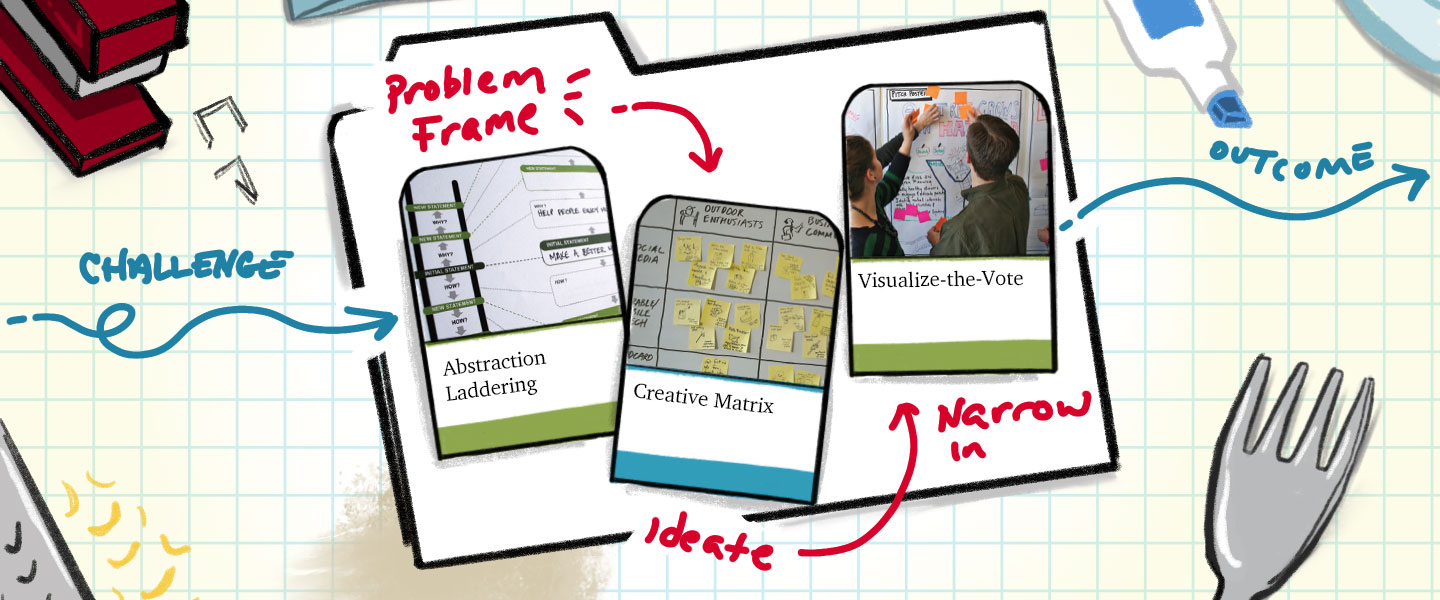Since we published the LUMA System in 2012, we’ve looked for useful analogies to help people understand what it is and how to use it.
One analogy we’ve found to be particularly effective is to think of our system of design methods like the common foods you keep in your kitchen. Picture the fruits, vegetables, grains, proteins, and seasonings you have stocked. All of these ingredients can be combined to make different meals according to various recipes.
The same is true for the 36 design methods in our system: you can mix and match various “ingredients” (i.e. design methods) to address different challenges and navigate everyday experiences. We call these combinations “recipes.”
The LUMA System is modular and adaptive — it’s not a prescribed design process. This means you can use it in many different ways, but for some people who are newer to design, this flexibility can take some getting used to.
We like the analogy of creating and using recipes because everyone cooks. Likewise, as Herb Simon said, “Everyone designs… who devise courses of action aimed at changing existing situations into preferred ones.” And while it’s fair to say that some of us are amateur cooks and designers while others are accomplished experts, we are all capable of making tasty meals, so to speak, if we know when to use each ingredient.
But don’t worry, most people don’t start cooking by making recipes from scratch. Most people begin by following recipes that have been perfected by others. Our digital platform, LUMA Workplace®, includes dozens of recipes, made by some of LUMA’s best “chefs.” (You can sign up for a free trial of LUMA Workplace.) Here are some of my favorites:
- Identify and agree on the right problems to solve
- Align on ways to create a more inclusive environment
- Brainstorm lots of ideas and zero in on the best
- Make ideas tangible early on to gain rapid feedback for improvement
- Highlight and prioritize ways to improve company culture
Members of the LUMA Community certainly have their favorite recipes, like I do, but just like when cooking meals, they have also created new ones. Our Session Planner tool on LUMA Workplace allows you to do just that; create recipes on your own. No need to stick to the cookbook if your situation calls for something different. We encourage you to use these recipes as-is or as a point of inspiration and make them your own.
The beauty of recipes is that there are seemingly endless combinations, but I recommend starting with a few that you love, then expanding from there. You can’t go wrong if you keep one goal in mind: making things better for the people you serve.
Happy “cooking!”

